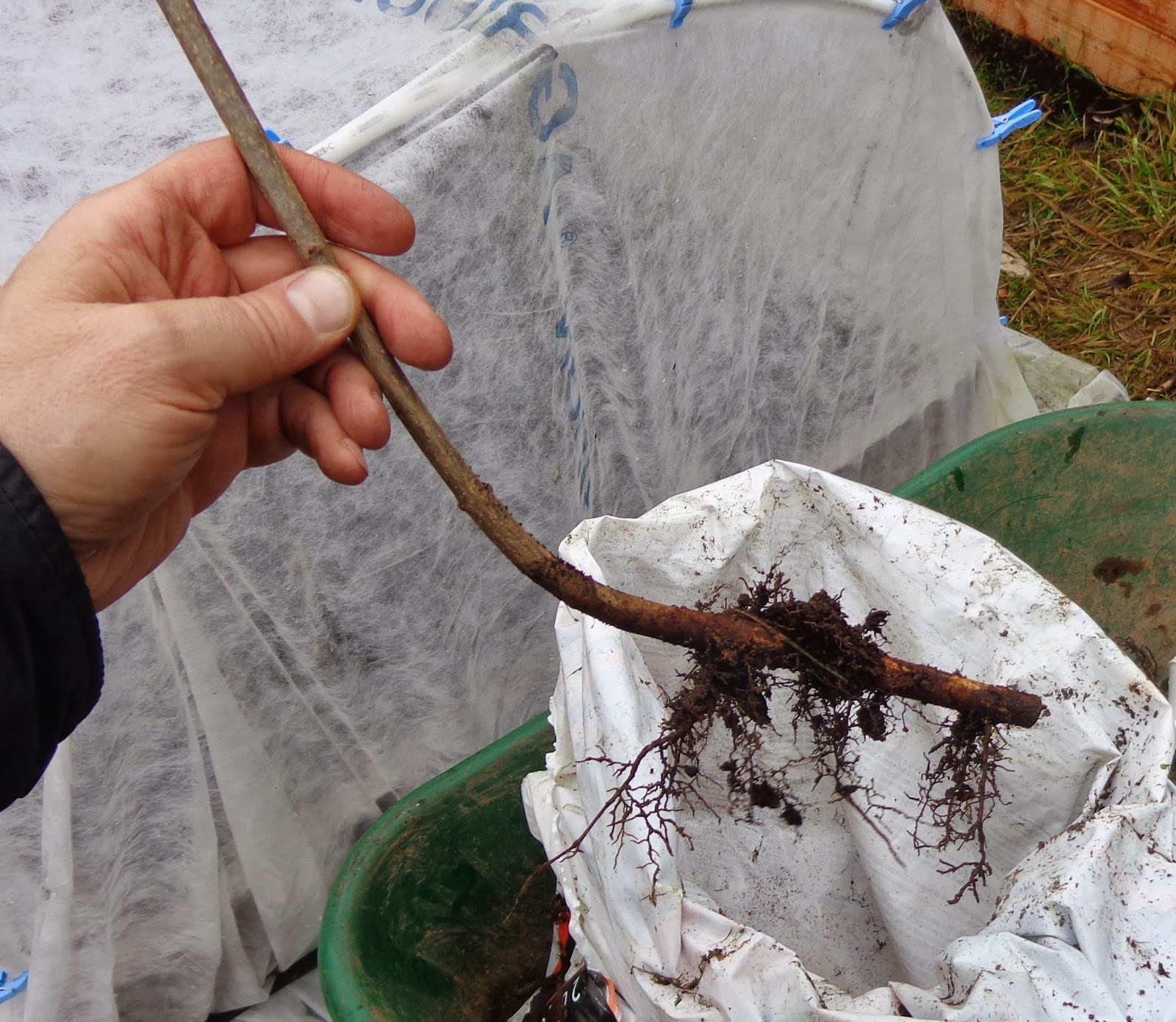Anxiously awaiting the ForestFarms order - 3 new varieties of sterile Buddleia, a Philadelphus lewisii, and 2 varieties of hebes. All for the pollinating insects. Some, I hope, for honeybees.
| Vancouver, WA, United States | 01/21/2014 | 6:58 A.M. | Out For Delivery |
| 01/21/2014 | 6:53 A.M. | Arrival Scan |
| Portland, OR, United States | 01/21/2014 | 6:32 A.M. | Departure Scan |
| 01/21/2014 | 4:54 A.M. | Arrival Scan |
| Roseburg, OR, United States | 01/21/2014 | 1:27 A.M. | Departure Scan |
| Roseburg, OR, United States | 01/20/2014 | 10:44 P.M. | Arrival Scan |
| Grants Pass, OR, United States | 01/20/2014 | 9:28 P.M. | Departure Scan |
| 01/20/2014 | 7:20 P.M. | Origin Scan |
| United States | 01/20/2014 | 7:24 P.M. | Order Processed: Ready for UPS |
These days a lot of my garden comes via internet. Probably, most. That is despite my philosophy that local provenance is so important. And my hope that people can pass good, locally adapted, varieties on to friends and neighbors.
It's frustrating to go to a local nursery, and see that everything appears shipped in, some items inappropriate for the area. Like tropicals here in the NW, or invasives, and even some illegal invasives. Or to be given inappropriate or just plain wrong information. At one local nursery, I was told pawpaws don't need a pollinator - wrong - and there are no paw paw cultivars - wrong, and there are no persimmon cultivars - wrong.
 |
| Image source vintageprintable.com |
So using the internet, I can research, ponder, explore, sort through reliable info and more just-plain wrong, and obtain what I think will do best. Ultimately, it will still be up to me to see what does well and what does not grow, or isn't worth the effort.
Some negatives of internet gardening -
You don't get to sort through the plants and pick the best looking one for purchase.
You don't know how big it will be. I've received some tiny starts at high prices.
Shipping can damage some plants - although I've been lucky, almost everything has arrived in good shape.
Gratification is not instant. Although, sometimes it's pretty fast.
There is risk it will sit in the sun wilting, or in the cold freezing, if the order comes when I am at work.
Generally, you can't buy it, or see it, in bloom, in person, before buying.
A lot of plant pictures are highly selective, such as just the flower, so you don't know what the plant will look like.
Some bad players on the internet spam mercilessly, once they get your email address
 |
| Image source: vintageprintable.com |
Some positives of internet gardening -
It's like christmas coming home to a package of plants or plant starts.
I can mull over a plant or tree or seeds, over and over, for a long time, before actually buying it.
Research likely sorts out some duds that might actually be bought on impulse.
You are not limited to one source.
You can find many varieties that are not available locally, even if they would be well suited.
You can support companies whose philosophy you like, such as seed savers and venders of heritage varieties.
You can really shop around on price.
 |
| Image source: vintageprintable.com |
Some learnings about internet gardening.
Go to Daves Garden for info on the vender. Some are just plain crooked, others have bad products or bad customer service, ship way slowly, send dead, dying, or not thriving material.
Once there is someone I like, and have good experience, I like to use them again.
Once I have a bad experience, think twice, three times, 4 times, before using them again.
Really read to know the size of the plant. I don't mind it being small, but too small at high price is disappointing.
On that Forest Farms order - last year I liked the Linden I bought from them. I could not find a similar one locally. It was nicelyn packaged, and shipped on time. The tree was in good shape. This order, the plants will be smaller, but in the case of the Buddleias, are legal, noninvasive, very fast growing, and I couldn't find those varieties locally.
Update. Here they are.
 |
| Forest Farm Shipment |
Very nicely packaged. No damage at all. Not a single broken twig. The shrubs are dormant, but they look healthy and ready to plant.
They are larger than I expected. This is an A+ shipment.
 |
| Opened |
 |
| Unwrapped |
The "tube" plants are interesting. They are planted in paperboard tubes. The tubes look like they degrade easily. Better than plastic - more environmentally friendly.




























